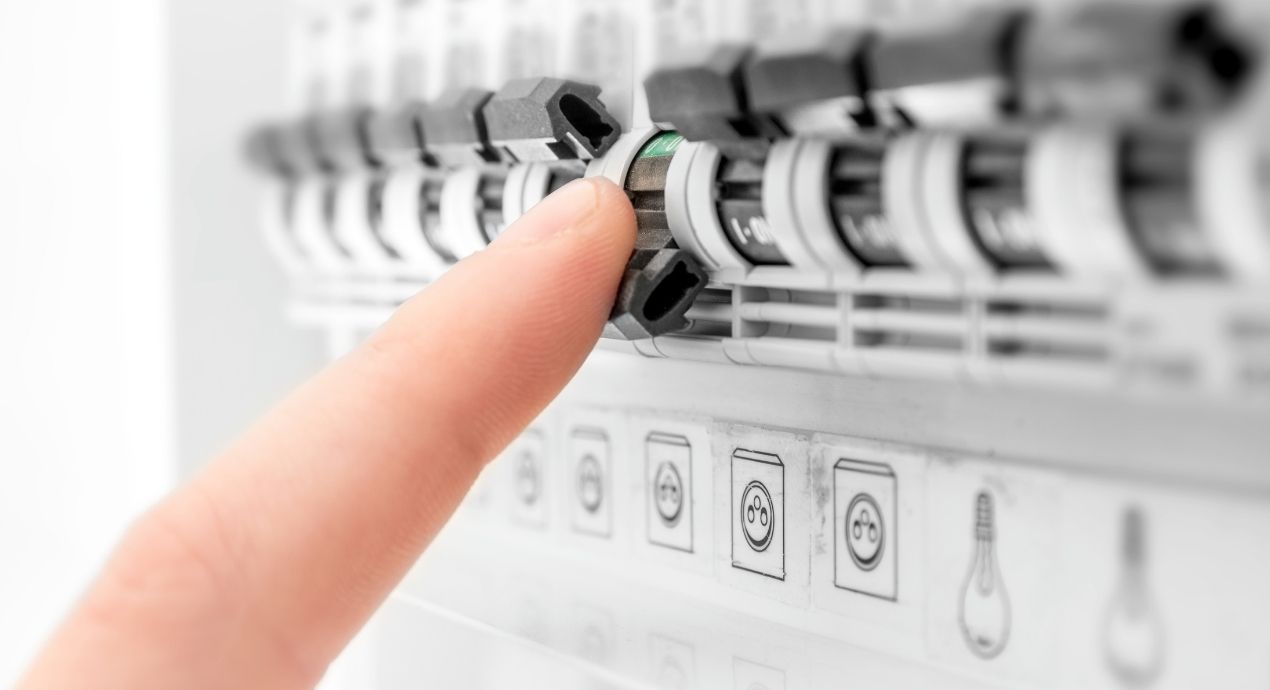
Contemplating coverage?
Subscribe to receive our emails & get
$200 off!
Have questions?
Call us: (833) 544-8273


Written By Erin Easley
Most homeowners will experience a blown fuse or tripped breaker from time to time. Fortunately, that’s no big deal. It’s pretty simple to fix a tripped breaker, and changing a blown fuse is a likewise manageable task.
In this post, we’ll share a step-by-step process to help you fix a blown fuse or tripped breaker.
There's a reason Liberty Home Guard was rated the #1 Home Warranty Service by U.S. News and World Report for 2021, 2022, 2023, and 2024. Check out our services.
Learn MoreModern homes have circuit breakers to protect and control the home’s electrical system. In older homes, a fuse box serves this same purpose.
Occasionally, an electrical circuit can become overloaded. This is usually because too many power-hungry appliances are drawing power from the same circuit. Running a space heater and vacuum from the same outlet, for instance, could very likely result in a tripper breaker or blown fuse.
If a circuit does become overloaded, the outlet will lose power entirely. This is your home’s electrical system working as intended. You’ll need to reset the circuit breaker or replace the fuse, depending on the system in your home.
There are other possible reasons for blown fuse or tripped breaker, such a short circuit or ground fault, but these are less common.
So you ran an air conditioner and blender from the same outlet and lost power. Here’s how to resolve the issue.
Your first step is to disconnect anything that was drawing power from the circuit. Turn off any lights and unplug the appliances. The reason for this is to avoid overloading the circuit again once you have tended to the breaker or fuse. If appliances are still plugged in, they will likely overload the circuit again when power returns.
Home electrical panels are most often in the basement, garage, or utility closet. Larger homes may have more than one panel. Use caution, of course. Handle the panel with dry hands. If you’re feeling unsure, contact an electrician for help.
If your panel is well labeled, scan to find the correct circuit to reset. It’s still easy to find the affected circuit even if there are no labels, however.
If you have a circuit breaker, look for the breaker in the “off” position or facing a different direction relative to the others. Flip the breaker to the “on” position. If you notice the breaker between the “on” and “off” positions, move it to the “off” position before turning it on.
If you have a fuse box, locate the broken fuse box component. Often, it will be a different color than the other fuses. If they all appear the same color, look closely to see if one has a melted piece of metal inside. No need to search for “how to change fuse in home fuse box.” All you do is unscrew the broken fuse and insert the replacement.
Test a light or appliance to ensure power is restored. If you lose power again, you may have an electrical problem that requires a professional electrician to resolve.
Some home electrical problems aren’t as easily resolved as a blown fuse. There could be more serious problems with in-wall wiring or other components of the electrical system, leading to power failures, destroyed appliances, and even a fire.
Electrical appliance warranty coverage or home electrical appliance insurance can ensure you’re prepared for any electrical snafus in your home. And this protection doesn’t have to break the bank. Liberty Home Guard can provide you with affordable, reliable coverage. Use our website for a free quote or call (833)-544-8273.
Stay Ahead of Potential
Home Mishaps!
Subscribe to our Liberty Home Guard Newsletter and gain access to exclusive content that ensures your peace of mind.